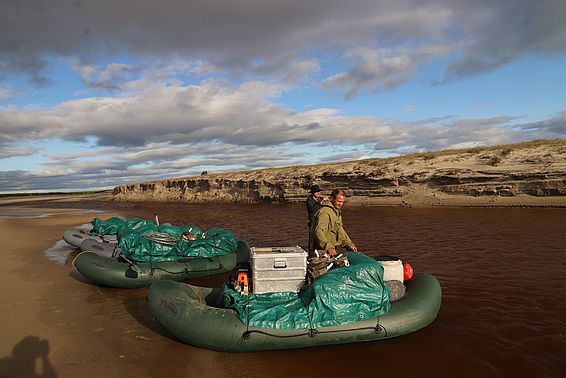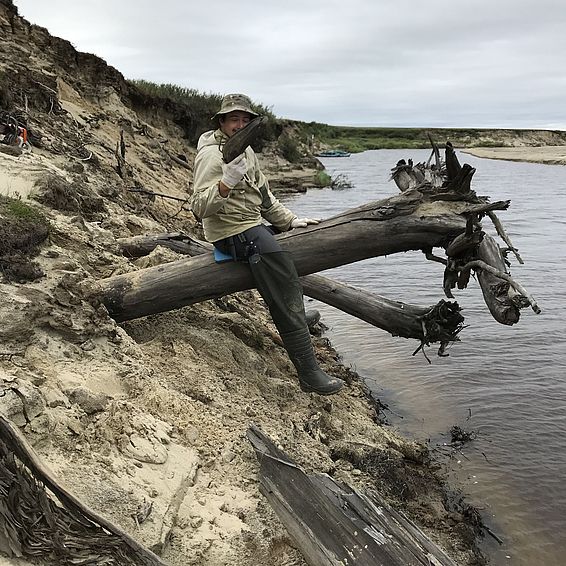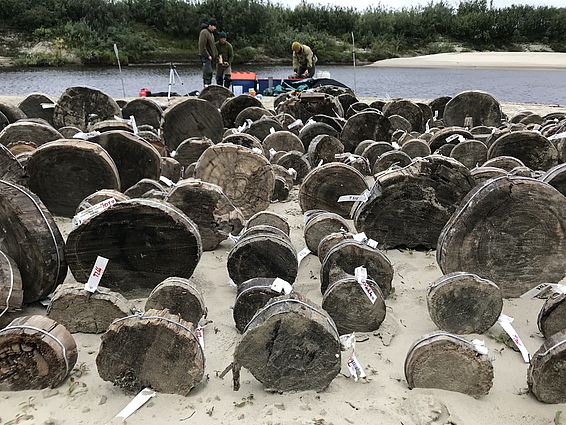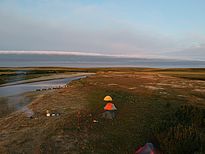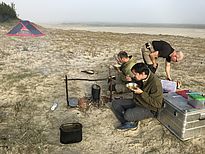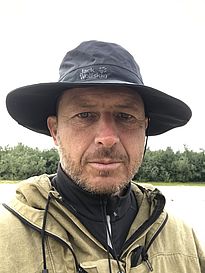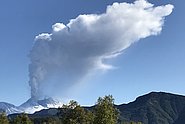30.04.2020 | Logbook
For one month, a group of tree-ring scientists braved mosquitos, icy-cold rivers and solitude to unlock the secrets of ancient forests buried under the Siberian tundra. WSL dendrochronologists Patrick Fonti reports about the expedition to the Yamal peninsula in our "Logbook" blog.



«Eggs? Watermelon? Really!? Are you sure?» I asked my companions bewildered. We were in Лабытнанги (Labytnangi) in Northern Siberia buying groceries for a 4-week expedition to the Yamal peninsula, at the northernmost reaches of the Ural Mountains. «Of course», answered Volodia, a fellow dendrochonologist from IPAE Yekaterinburg, «we have to treat ourselves a little, there is nothing else up there». And Vania, the co-expedition guide, added: «Volodia, take more, it’s not enough!»
We piled armloads of goods such as canned meat, Сгущенка (condensed milk), porridge, rice, pasta, bread and anti-mosquito spray on the counter of the «ПРОДУКТЫ», one of the small grocery shops you find all over Russia. We stuffed everything into our backpacks, but we had to walk forth and back several times to the Arctic station in Labytnangi. Together with 4 rubber boats, 4 pairs of fishers’ gum boots, tents, kitchen camp, various instruments and an old frying pan borrowed from the Artic station, it all went into four sturdy blue plastic boxes per person. After two days of preparation, everything was loaded into a medium twin-turbine Soviet era helicopter Ми-8. We took off and set course to the north-east.
Two hours later, we landed next to a river that had looked rather like a little creek through the porthole. Shortly after, as the helicopter disappeared beyond the horizon, the four of us left behind (two Russians, a Spaniard and a Swiss) began to face our solitude: the landscape was flat and empty, the remoteness was touchable. Our ears were still ringing with the noise of the double rotors and the same question was on everybody’s mind: «Are we at the right coordinates?»
Row, row, row your rubber boat ¶
As I was the oldest – and least experienced in survival skills – in the team, our Russian host took special care of me. I had been assigned as «taking-notes-man», which saved me from digging out logs from sand and mud. However, I still had to safely paddle my own rubber boat down the 300 km long river, no matter what the weather (wind, rain) or biological (mosquito) conditions.
Despite the physical challenges and remoteness from everything familiar to me, I was acutely aware of how unique my experience was. Not only was the landscape indescribably beautiful and the intercultural team spirit fair and enriching, but knowing that we might as well dig out the remains of a Mammoth with the next log made this an extraordinary undertaking. I found it extremely gratifying to take part in finding, collecting, archiving and preserving logs of antique forests buried many millennia ago and now emerging from a melting permafrost where today there is nothing more than bare tundra.
Equally exciting was the prospect that our collected samples contribute to a better understanding of past climate variability over the last 7 to 8 millennia, back to when mammoths roamed these lands. It was also nice knowing that as part of our Swiss National Science Foundation Sinergia Project «Caldera» we would also investigate the shape and size of the water conducting cells – further serving us and other scientists to better understand the distant past.
500 wooden discs
Far from civilization, internet, clocks and phones, the numbers of samples collected was our time-keeper during the daily routine. The food in the boxes was progressively replaced by wooden discs. «How many did we get?» asked Alberto, dendrochonologist at SFU Krasnoyarsk. «93, so far», I answered. «If we manage 100, I will cook Penne alla carbonara tonight.» I stuck to my word and prepared a very original pasta dish with eggs, canned meat and onions. I knew that the Parmigiano I had put in my backpack before heading to Russia would be a special treat for everyone. And so it was!
I returned to my «comfort zone», my beloved and colleagues enriched by many impressions and 500 new samples of precious antique wood. I am proud of myself, my fellow explorers and the whole collaborative research team. Now, we will soon have the first 2 millennia of the Yamal cell anatomical chronology analyzed and are eager to find out what stories they will tell. All of you guys are amazing, thank you so much! The Yamal Expedition from August 9 to September 2, 2019, was definitely one of the highlights of my research career.
Acknowledgments ¶
The expedition would not have been successful without Volodia (Vladimir V. Kukarskih), Vania (Ivan A. Surkov), Rashit M. Hantemirov (all IPAE Yekaterinburg) and Alberto José Arzac Peña (SFU Krasnoyarsk). Special thanks also to the Arctic station of IPAE for providing logistics and support, as well as to all the partners of the SNF Sinergia project "Caldera".
The expedition was supported by:
Russian Foundation for Basic Research, project #18-05-00575
Russian Foundation of Science, project #18-74-1048
The Sinergia Project "CALDERA" funded by the Swiss National Science Foundation project #183571

